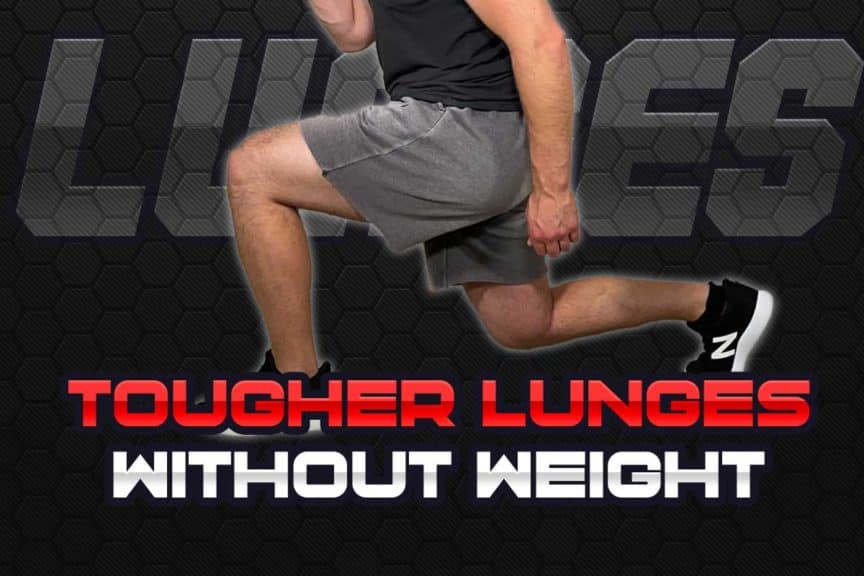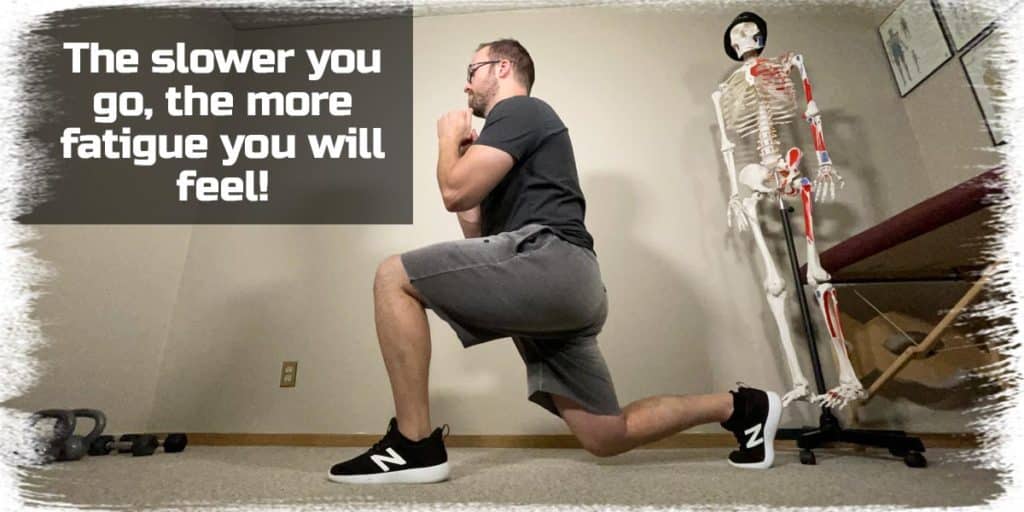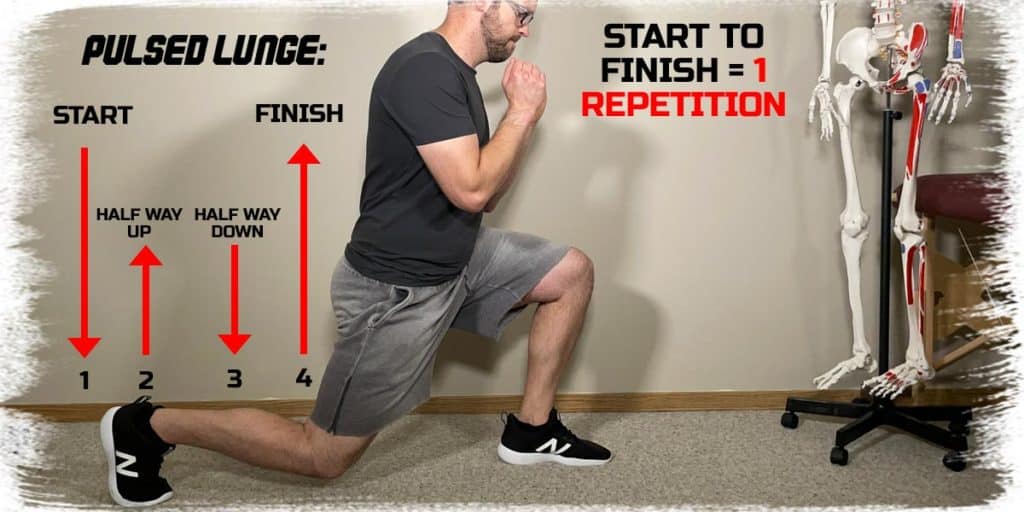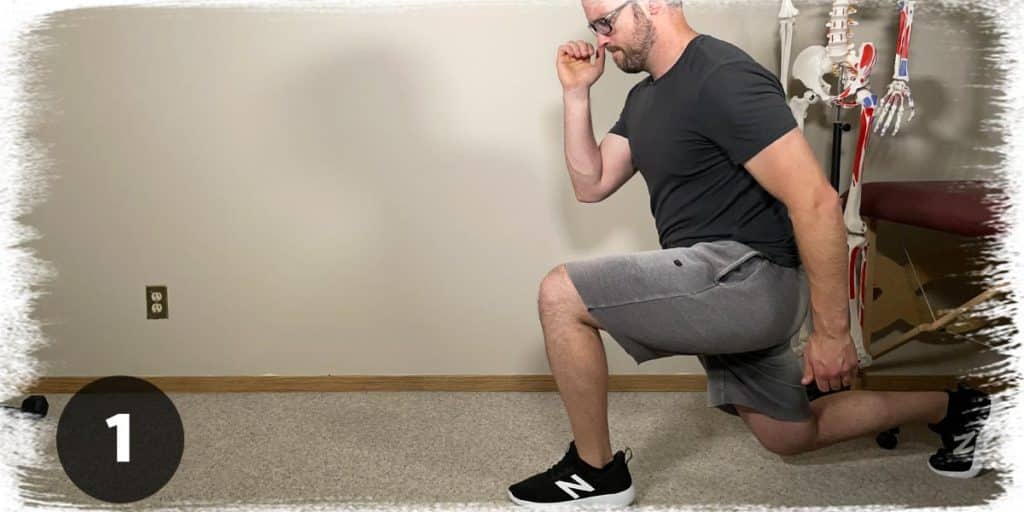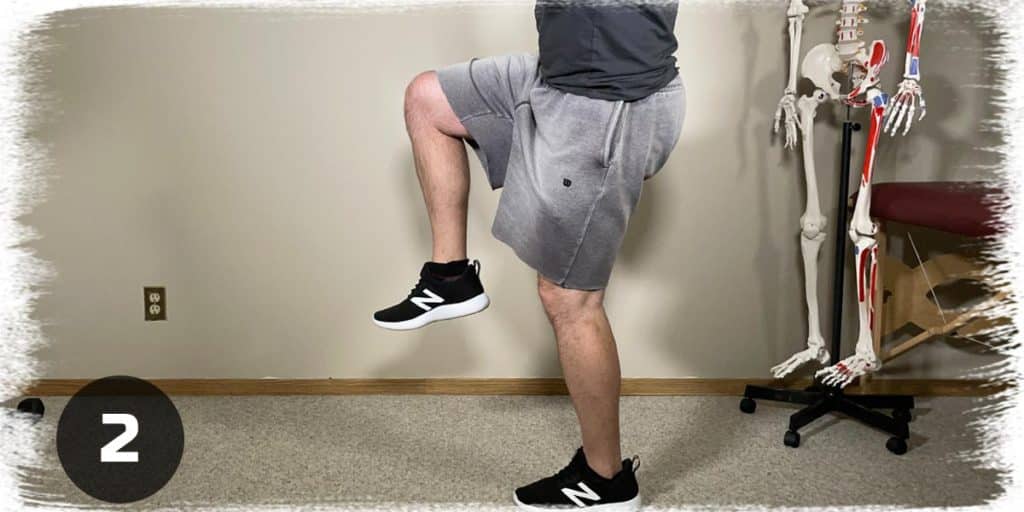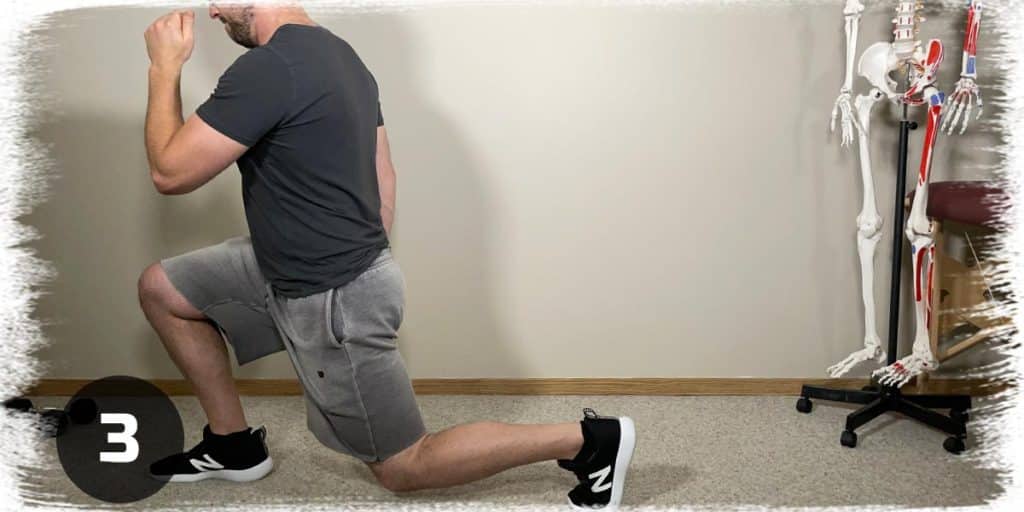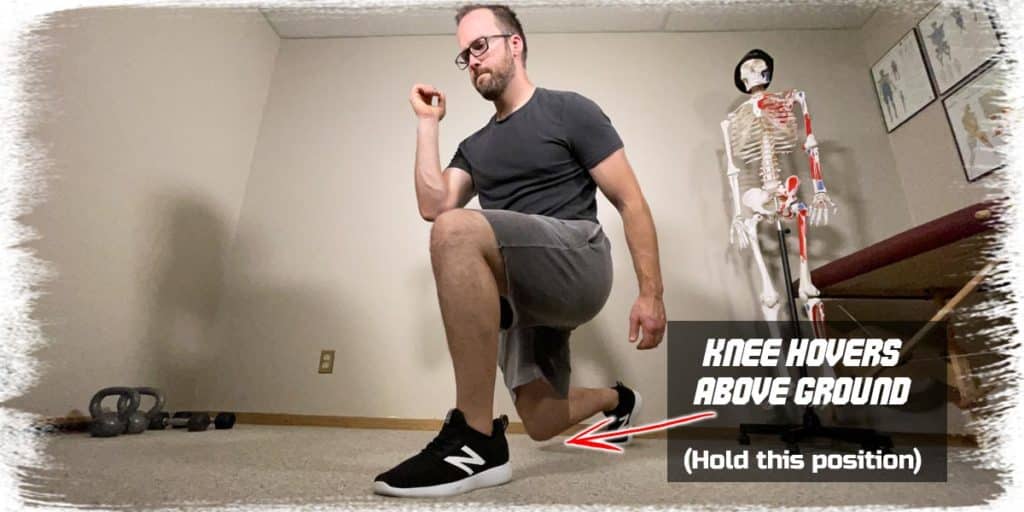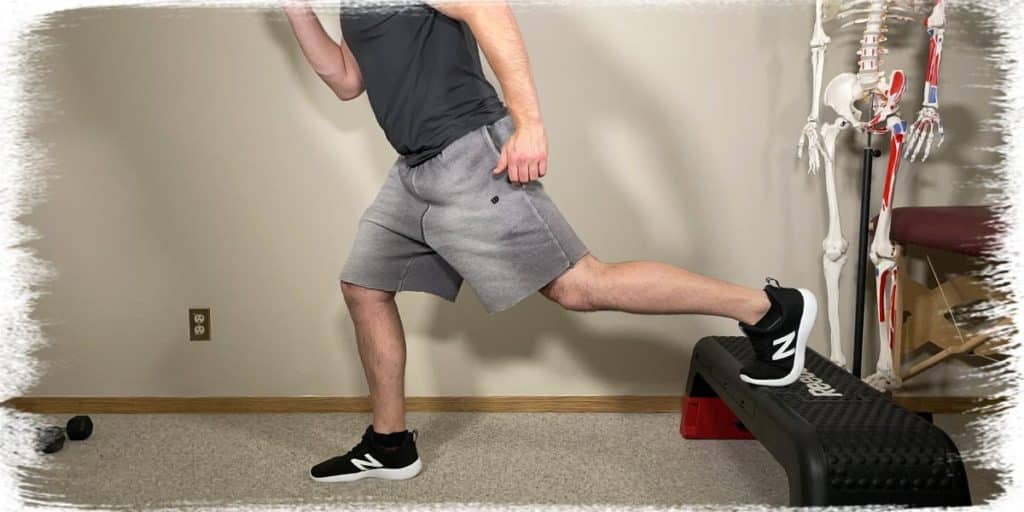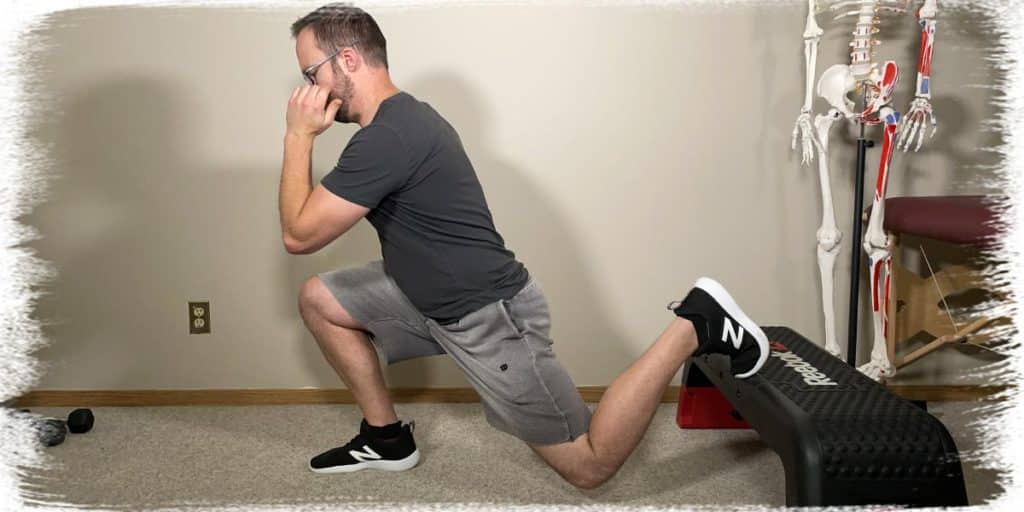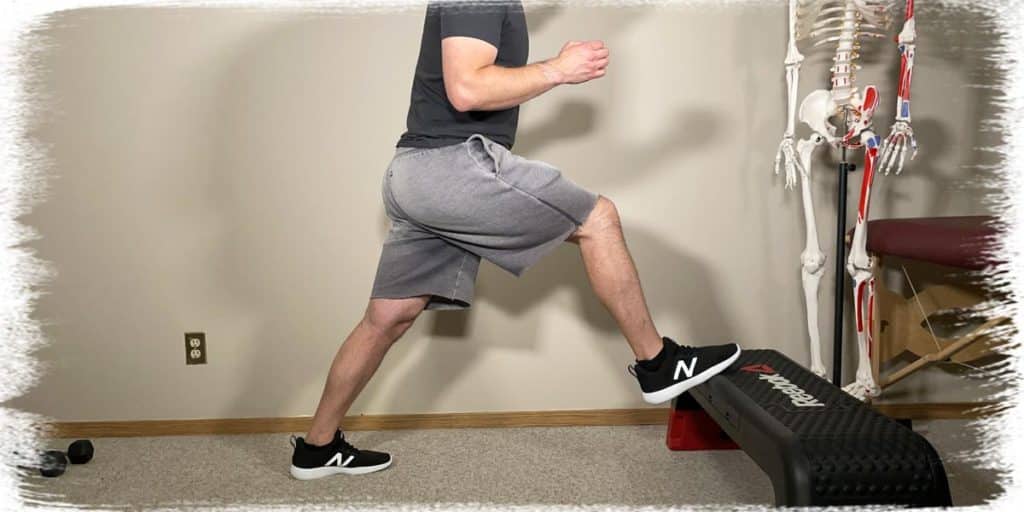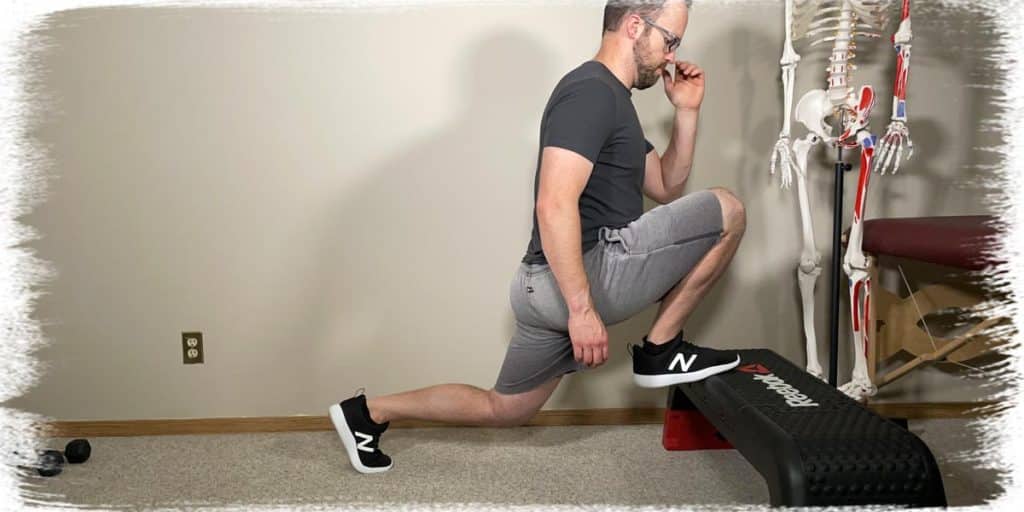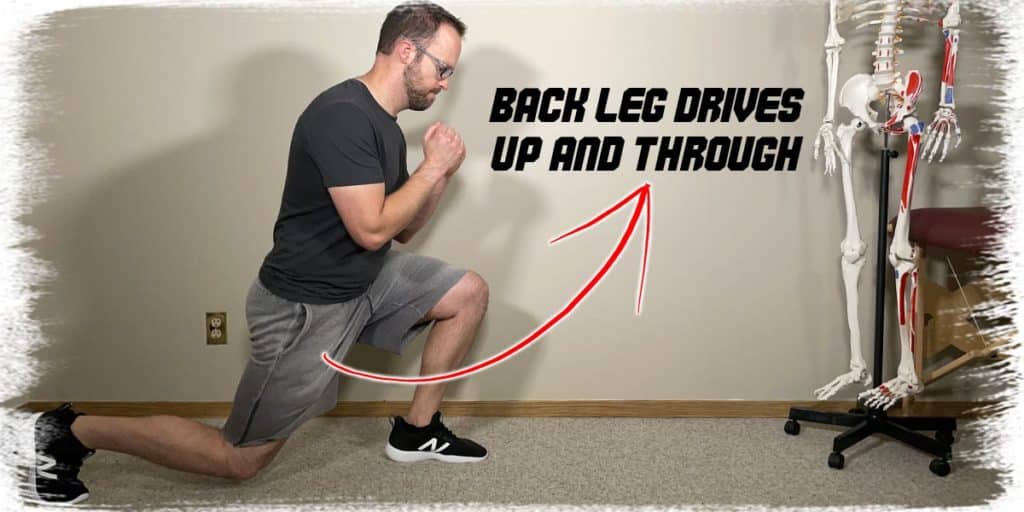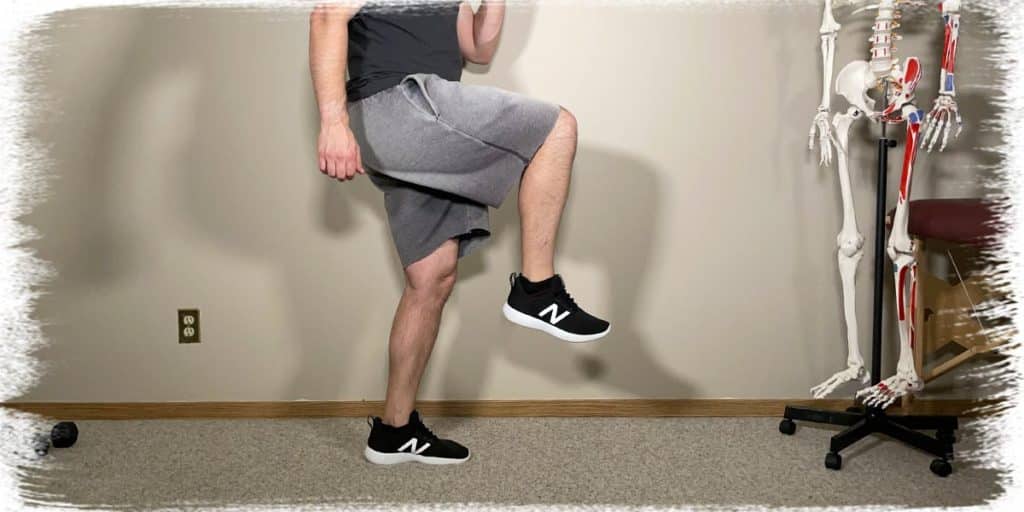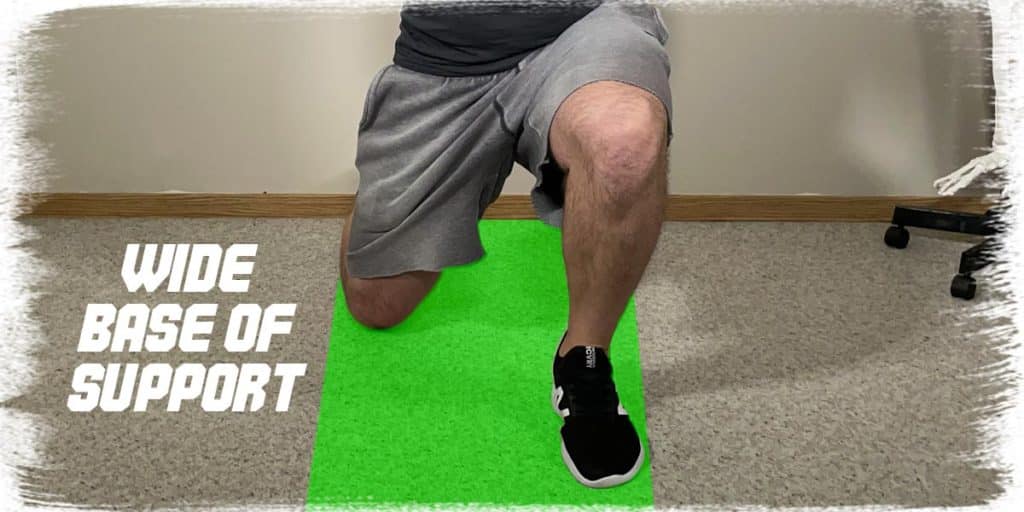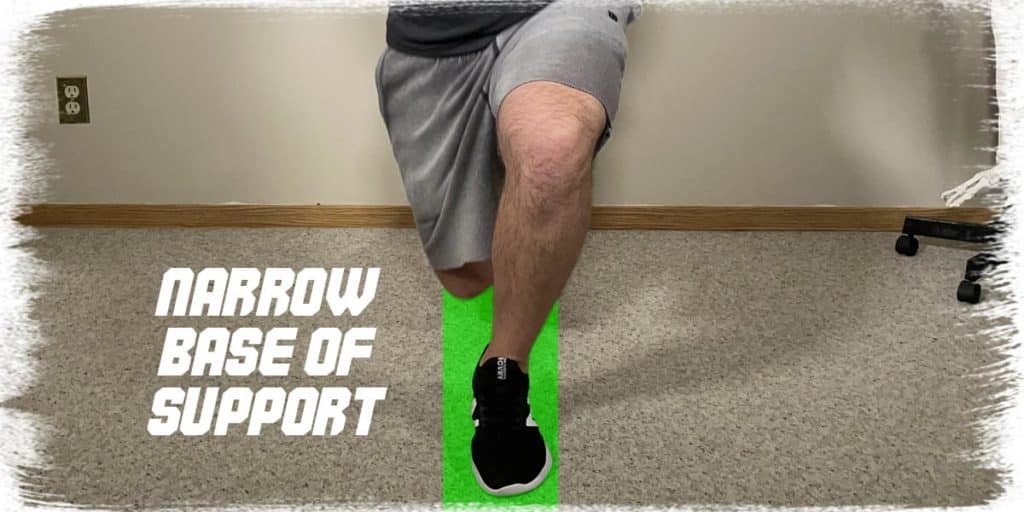Making lunges harder without adding any weight is actually a pretty straightforward process if you know how to make a few tweaks and changes to the standard movement. If you need some seriously effective ways to light up your legs to a greater extent (without adding extra weight) when it comes to performing lunges, this article is for you.
Making your lunges much more challenging without adding weight can be done by:
- Slowing the movement down
- Eliminating the pause in between reps
- Performing pulsed lunges
- Doing Forward-backward lunges
- Pausing the lunge while hovering
- Elevating your back foot (the Bulgarian method)
- Elevating your front foot
- Lunging with a knee-drive
- Using a tandem stance
If you want the details (including pictures) on how to make each one of these changes and why they make lunges way more challenging, keep on reading!
ARTICLE OVERVIEW (Quick Links)
Click/tap on any of the following suggestions to instantly navigate to that section of the article!
Method 1: Slow the movement down
Method 2: Eliminating the pause in between reps
Method 3: Performing pulsed lunges
Method 4: Doing Forward-backward lunges
Method 5: Pausing the lunge while hovering
Method 6: Elevating your back foot (the Bulgarian method)
Method 7: Elevating your front foot
Method 8: Lunging with a knee-drive
Method 9: Using a tandem stance
Related article: No Equipment Required: This Hamstring Exercise Will Light You Up
Method 1: Slow the movement down (a lot)
Slowing down the rate at which you perform an exercise is a classic, bread-and-butter way to make nearly any exercise or movement more challenging and effective.
When slowing an exercise or movement down, the muscles have to work for a more extended length of time (often referred to as time-under-tension). Increasing time-under-tension has been shown to be an effective way of increasing muscle strength and size.1-3
How much you slow the movement down is based on your abilities or needs. But generally speaking, the slower you go, the more challenging your lunges will become.
Method 2: Don’t pause up top in between reps
The micro-break that the muscles get when performing a slight pause in between each repetition can decrease the overall challenge of the exercise to a surprising extent.
To counter this, you can try keeping a continual movement when lunging, which means that the second you get back to the top of the lunge, you instantly begin moving back downwards.
Keeping continual movement in your lunge for an entire set can create an immense amount of fatigue and take the challenge of a bodyweight lunge to new levels.
Pro tip: If you REALLY want to kick the challenge up a notch, don’t lock your legs out in between reps; once you get to approximately 90% back to the top/starting position of your lunge, immediately drop down again at this point. This continual tension on your muscles will produce a rapid amount of fatigue and an overall much greater challenge!
Method 3: Start doing pulsed lunges
Warning: pulsed lunges will kick things up quite a bit when it comes to feeling the burn!
A pulsed lunge consists of performing an extra half repetition at the bottom range of your lunge for each rep. Essentially you’re performing 1.5 repetitions each time.
To perform pulsed lunges:
- Drop down to the bottom of your lunge as you normally would
- Rise back up halfway, then slowly drop back down to the bottom of the lunge
- Rise back up all the way to the starting position
Related article: Activate & Strengthen Your VMO With This Science-proven Exercise
Be sure to do all of this without pausing at any point throughout the repetition. You can pause for a brief second after you’ve returned all the way to the top, or you can eliminate this pause as well if you really want to start feeling the burn.
Method 4: Use Forward-backward lunges
The forward-backward lunge is a phenomenal variation since it works both legs while evenly challenging the quadriceps muscles and gluteal muscles.
To perform forward-backward lunges:
- Lunge forward as per usual.
- As you return to the starting position, keep your stance leg still and continue to move your other leg behind you.
- Once you’ve reached back with your leg and your toe is in contact with the ground, make sure your balance is stable and then drop into a lunge.
- Return to the starting position but swing the leg through so that you immediately drop into a forward lunge.
- Repeat for as many repetitions as needed
- Repeat using the opposite leg
Pro tip: You can pause in-between the forward and backward lunge by letting your foot rest on the ground each time you return to the full-standing position, or you can swing the leg through without touching the ground. The latter will result in continual movement and greater fatigue on the stance leg as well as the leg that swings forwards and backwards.
Method 5: Do paused, hovering lunges
A hovering lunge is one where you don’t let your knee touch the ground but rather keep it “hovering” just an inch or two off the floor for a specified amount of time before returning to the starting position and repeating the movement.
By pausing the movement at the bottom, the quad and glute muscles will have to work aggressively to hold this challenging position, which can add up quickly when it comes to fatigue.
Related article: The BEST Glute Medius & Minimus Exercise That No One is Showing You
Depending on your fitness level and how many repetitions you’re doing for each set, you can pick a paused length of time that is appropriately challenging for you.
Here are some general targets you could try and aim for based on your overall fitness abilities:
Method 6: Try the Bulgarian split squat
The Bulgarian split squat is arguably the most demanding way you can perform a bodyweight lunge. What makes it more challenging is the fact that your back leg is elevated on a stool, bench, etc., throughout the movement.
The result is that your front leg (the stance leg) now must produce a much more intense contraction to push your body upwards.
The Bulgarian split squat movement is the same as if you were performing a standard split-lunge (lunging straight up and down). So, if you’ve been performing split lunges and haven’t found them to be challenging enough, the Bulgarian split squat will more than likely provide you with an adequate challenge.
Pro tip: If you’re a bit shaky with your balance, you can perform the Bulgarian split squat while holding onto a dowel or stick, which can act as a kickstand to provide you with added balance.
Method 7: Elevate your front foot
If you’re looking to add a bit more of a challenge to your quadriceps muscles OR challenging your range of motion (i.e. mobility) in your lower body, elevating your front leg onto a box, stool, bench, etc., can be the perfect solution.
This modification likely won’t be as demanding as the Bulgarian split squat, however, you should feel an added demand to your front leg when you push yourself out of the lunge position and back into the upright starting position.
This makes it a perfect variation for those looking to add extra emphasis or challenge to their quadriceps muscles.
Method 8: Put a knee-drive into your lunge
Adding a knee-drive into your lunge can be a great way to not only challenge your balance a bit more but also to challenge the strength of your hip muscles as well.
Whenever we balance ourselves on a single leg, the hip muscles on the stance leg must work much more intensely to produce stability around the joint and keep us balanced.
Related article: The BEST BFR Leg Exercises for Size and Strength (Backed by Science)
As you drive yourself out of the lunge, your stance leg will have to work for a more extended length of time, especially if you hold the finishing position for a second or two before returning out of the knee-drive position.
So, if you’re looking to challenge your hip muscles to a greater extent, or you want to improve your balance, adding a knee drive into each of your lunges is a smart move to make!
Method 9: Performing tandem stance lunges
Speaking of challenging your balance more: a great way to increase the overall challenge of your lunges is to narrow your base of support. This will require extra muscles in your body (such as the core) to really have to work harder to help you maintain your balance.
The more narrow you make your stance when performing a lunge, the more you will challenge your balance. Typically, you’ll have to perform the movement slowly to avoid falling over or messing up. And as you learned in method 1, the slower you go, the greater demand your muscles will undergo.
If you’re really good with your balance and lunges, you’ll be able to lunge up and down while keeping your front foot directly in line with your back foot (as if you were walking on a tightrope). However, if this is a bit too challenging, simply widen your base of support a bit until you don’t lose your balance but still have to fight to maintain it on each rep that you perform.
Final thoughts
There are plenty of great ways to increase the challenge of lunges without adding any extra weight in the process. Give the tips within this article a try if you need to make your lunges a bit harder without wanting to add extra resistance to the equation.
And if you want, you can always take ANY of the tips in this article and apply them to any lunges you may be doing while adding extra weight (holding dumbbells, kettlebells, etc.)! And if you decide to do so, have fun and get ready to feel the burn!
References

Hi! I’m Jim Wittstrom, PT, DPT, CSCS, Pn1.
I am a physical therapist who is passionate about all things pertaining to strength & conditioning, human movement, injury prevention and rehabilitation. I created StrengthResurgence.com in order to help others become stronger and healthier. I also love helping aspiring students and therapists fulfill their dreams of becoming successful in school and within their clinical PT practice. Thanks for checking out my site!

